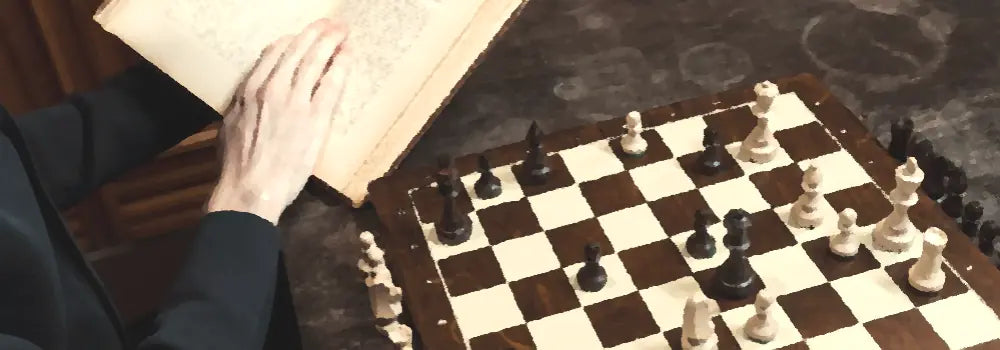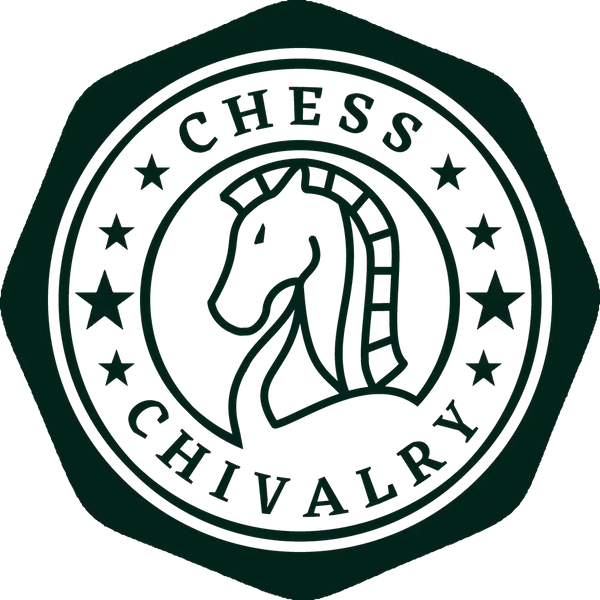
Chess & Strategy: Guidelines for Advanced Players
Share
Chess is undoubtedly one of the most demanding and fascinating games ever created in the history of mankind. Achieving success in the game requires not only an understanding of the basic rules but also comprehensive strategic and tactical thinking. Those who have already mastered the fundamentals of chess and now wish to further enhance their skills will hopefully find some new insights in my following article.
In this chess guide, various guidelines are examined, specifically targeting players with advanced skills. These rules of thumb are based on decades of experience from renowned chess players and in-depth analyses conducted within the realm of chess. The aim of these rules is to reduce the complexity of the chess game while nurturing better decision-making. The focus is particularly on developing a better understanding of the positioning of chess pieces and aligning tactical play with strategy.
Identifying the Weakest Chess Square
The weakest chess square is characterized by not being defended by any chess piece, thus representing a vulnerability in defence. To successfully initiate an attack, attention should always be paid to weak chess squares and incorporating them into the advance. Here's an example:

In this game position, the d5 square is weakened as it is not defended by a black pawn or any other black chess piece. This allows White to move its knight into an attack, threatening squares c7 and e7. Moreover, it's highly unlikely that the knight can be dislodged from its new position, as it can't be attacked by a pawn, the bishop occupies a different coloured square, and the rook is blocked by its own black pawns. Black will struggle to prevail in the endgame, whereas White can initiate its attack smoothly through its pawns.
Development of the Weakest Chess Piece
Especially in situations where a player is unsure about the next move to make, the principle of developing the weakest chess piece comes into play. According to this principle, the player should not seek a tactical manoeuvre but rather analyse the current position of their chess pieces and then move the piece with the least tactical utility or the one that is simply vulnerable. The goal of this move is to then reposition this chess piece to a better square, thus actively involving it in the game. However, a precondition is that there is no immediate threat from the opponent that requires a response.

Improvement of the bishop as the weakest chess piece
In this example, it becomes clear that the bishop on d2 is not actively participating in the game. With the advancement of the white pawn to b5 and the threat posed by the knight's move to e6, Black is compelled to take action. By later positioning the bishop on f7, Black loses without any chance of recovery. Although integrating the bishop required sacrificing a pawn, it paid off.
Checking the Position for X-ray Attacks
So-called X-ray attacks are hidden attacks that only become visible when an uninvolved chess piece is moved. For example, a bishop can offer check when a pawn moves one square forward, freeing up a line of attack on the king. If this pawn also becomes a threat, the loss of a chess piece is often inevitable. Openings that strategically utilize x-ray attacks often involve a fianchetto, where the bishop is placed on b2 or g2 for White and b7 or g7 for Black. From these positions, the bishop targets both the centre and an opponent's rook if it has not yet moved. Throughout the game, the bishop gains an optimal position to intervene.

Fianchetto with x-ray attack on the centre and opponent's rook
It is advisable to analyse with each opponent's move how far the attack potential of the moved chess piece extends, and, if possible, to move important chess pieces like the queen or even the king out of this line of attack.
Attacking the Bishop of the King's Square
The opponent's bishop situated on the colour of one's own castled king is generally the more valuable of the two bishops. In the long run, it has the option of delivering a check to the king. Additionally, the bishop is generally considered more valuable compared to a knight.

Exchange of bishops advantageously for White
Therefore, if an opponent's bishop standing on the same colour square as one's own king can be captured by a knight, this can lead to a strategic advantage. The same applies in reverse. If the opponent has lost a bishop, it can be strategically wise to reposition your king on the square of that bishop's colour.
Attacks on Pawns
Many chess players hesitate to focus their attack on pawns. Rather, they attempt to threaten knights or bishops, even if an opponent's pawn is vulnerable and unprotected. However, attacking pawns is crucial, resulting in an early weakening of the opponent's pawn structure. In the endgame, attacking pawns becomes directly decisive for the game.

Attack on weakened pawns in the endgame
While a pawn is by far not as valuable as a bishop or even a queen, it is immobile and cannot retreat. It represents one of the most common weaknesses during the transition to the middlegame, and its defence always comes at the expense of the opponent's strategy. A good exercise is to focus primarily on capturing pawns for a few games and then analysing the development of the game.
Additional Protection through Pawns
Chess pieces that have a defender and an attacker are usually more vulnerable than chess pieces that are neither defended nor attacked. This is because they bind their defenders and depend on them. Consequently, the defender becomes inactive and cannot be moved without leaving the other chess piece unprotected. To prevent this, if possible, the defence of chess pieces should be doubled. Especially when the piece to be defended is on a tactically valuable square.
Short Moves of the Queen
While the queen might be the most powerful chess piece, it doesn't always need to charge into the attack with vigour. A well-positioned queen can move short distances and often only to an adjacent neighbouring square. A good rule of thumb is to find the most stable line on the chessboard. Typically, this is a closed line with minimal risk that allows the queen's diagonal attack. As the queen should not be moved until all knights and bishops are brought into play, its initial defensive positioning can also be used to directly protect offensive chess pieces. This added protection is often crucial when calculating the exchange of chess pieces.
Verifying all Alternative Chess Moves
Candidate moves represent a method for calculating chess moves and were defined and described by the Soviet grandmaster Alexander Kotov. According to him, the challenge in chess is to identify all possible chess moves (candidate moves), calculate them, and ultimately execute the best chess move. Kotov defined the following categories, which have since been further elaborated by other chess authors:
Check Offerings by Capture
It is checked whether capturing a chess piece can trigger a check offering and thus a zugzwang. This category particularly considers sacrificing a chess piece to enforce the check offer.
Simple Check Offerings
If the opponent's king is vulnerable, it is checked whether a regular check offer can pressure the king or even deliver checkmate. This is the most common form of attacking the opponent's king.
Capture of Chess Pieces
Here, it is examined whether opponent's chess pieces are vulnerable and can be captured without resistance. Also, the strategic sensibility of exchanging defended chess pieces is considered.
Threats
Both offensively and defensively, it is checked whether a threat exists that can be arranged or must be countered. In the opening phase, early recognition of an opponent's threat is important. With the transition to the middlegame and one's own attack efforts, setting up threats becomes increasingly significant.

(1) The king's zugzwang costs Black his queen.
(2) The queen is protected and dislodges the king on h8, checkmate follows.
(3) With check on the king, White can capture the bishop and exchange pieces.
The guidelines presented in this article can also be categorized according to Kotov's scheme, which is why this structure initially serves as a methodological overview. The key takeaway from the concept of candidate moves is that the chess player should verify all candidate moves in each round without becoming negligent. Only then can errors be minimized and threats recognized in due time.
Conclusion
The greatest challenge in chess is effectively and efficiently managing the complexity of the game. Guidelines and approaches that reduce complexity and thus simplify tactical play are essential for self-improvement in chess. While not every guideline can be applied at any given time and must always be critically examined, such principles can be very helpful for orientation and problem-solving understanding. This article complements my chess contribution on the Golden Opening Rules in chess.
I hope my guide has helped you find new approaches to improving your playing style. If you have any questions, feel free to reach out to me anytime and write me through my contact form. If you also play chess on the board, take a look at my range of Staunton chess pieces and chessboards. I offer a wide selection of handcrafted products in tournament format.
I wish you a lot of enjoyment in the game, much success, and rapid progress in learning.
See you soon.
Stefan
